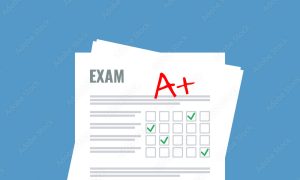Leadership
Teaching A-Level Dance For The First Time
Course Code:
T0071
£269.00+vat
ABOUT THIS COURSE
This course is designed for teachers who are new to teaching A-Level Dance, or who wish to improve their understanding to enable their students to achieve higher grades. The sessions are designed to improve delegates’ understanding of the Dance specification and ensure that candidates have the best opportunity to maximise their potential grades. Delegates will receive new teaching approaches as well as key guidance in how to develop exceptional examination and NEA techniques in A-Level Dance to maximise students’ success when delivering the course for the first time.BENEFITS OF ATTENDING
- Gain an excellent understanding of the complexities of the A-Level Dance specification
- Gain insight into the content, the exam structure and the how exams are marked.
- Understanding of how to differentiate using scaffold and stretch strategies for essay writing
- Understand the exams, mark schemes, standards and what examiners and moderators will be looking for.
- Examples of A-Level questions; how to prepare students to get the best possible marks
- Find out more about the best ways to transition the gap between gap between GCSE and A-Level Dance
PROGRAMME
The Specification in depth
10.00 – 10.45am- An overview – what’s involved in the course – Performance/Choreography/Critical Engagement
- Making successful the transition from GCSE to A-Level
- The challenges and what to expect from students
- Structuring a flexible course that allows you to respond to students’ needs
- Understanding the assessment criteria
- Explore the key challenges of delivery and ways to structure your teaching to give time to the most demanding sections
Morning Break
10.45 – 11.00amTeaching Component 1: Performance (solo and quartet)
11.00 – 11.45am- Preparing for success in Component 1, practical approaches and methods to teaching dance technique
- How to effectively introduce the technique and stylistic features of Rambert practitioners
- Improving feedback to students using the marking criteria.
- Exemplar solo and quartet work, with a focus on understanding the grading and giving feedback
Teaching Component 1: Effectively Teaching Choreography
11.45 – 12.30pm- Where to start and how to develop choreography skills
- Top Techniques and methods for teaching choreography in Year 12
- Choreography: planning and preparation
- Supporting students in developing the vital skills necessary to achieving good compositions
- The choreography questions – creativity and complexity.
- Understanding the grading – examining exemplar solo and group choreography
Lunch and informal discussion
12.30 – 1.15pmTeaching the Set Work Rooster (1991)
1.15 – 1.45pm- Understanding and meeting the demands of the written paper
- Teaching each Rooster in an inspiring, motivating and informative way
- Learning phrases inspired by Rooster and repertoire from Ghost Dances to understand the characteristic features of Bruce
- Teaching essay writing, devising questions, marking and feedback
- Approaches to questions and question styles on Rooster
Teaching the Rambert Dance Company (1966-2002)
1.45 – 2.30pm- Ways to choose two named practitioners within Rambert: what students need to know
- Stimulating and creative ways to teach the key points and information on teaching Rambert’s history using a variety of resources
- The 25 mark questions – helping students to write excellent responses – examples
Afternoon Tea
2.30 – 2.40mApproaches to Teaching Singin’ In The Rain & Jazz
2.40 – 3.00pm- Developing an understanding of the influences, importance and context to American jazz dance from 1940–1975
- How to build student understanding between the contextual background of the practitioner and the area of study
Approaches to Teaching Singin’ In The Rain & Jazz
3.00 – 3.30pm- Planning and structuring your 2-year scheme of work
- Milestones – assessment time tables, when, what and how to balance this with whole school assessment schedules
- Time management – how to plan so that you can mark efficiently and effectively, use of peer assessment
Depart
3.30pmThis course, tailored to suit, can be delivered in your school. Discuss this further with our CPD team on 01625 532974 or click below to make an enquiry.
COURSE LEADER
Claire Noonan is an experienced Head of Dance, and has been teaching GCSE and A-Level Dance for over twenty years. GCSE Results for 2022 for her students were 39% grades 8 – 9, 50% grades 7 – 9 and 100% grades 5 – 9. Progress 8 score 1.45. At A Level her students attained 35% A*, 64% A*/A grades and 100 A* – C grades. She continually receives outstanding grade 1s on lesson observations.
She is a Specialist Leader in Education (SLE) and has improved the quality of dance provision in a number of schools. She also has a wealth of experience in working with a range of professionals to ensure her students feel inspired for dance theory and prepared for their future dance training.
WHO SHOULD ATTEND
- Teacher new to A-Level Dance
- Teachers in their first three years of teaching A-Level Dance
- Heads of Dance
- Heads of Performing Arts
THIS COURSE INCLUDES
- A specially prepared folder of detailed notes, practical advice and guidance
- Notes prepared by the educational experts leading the course
- Expert produced PowerPoint presentations
- CPD Certificate of attendance
Description
ABOUT THIS COURSE
This course is designed for teachers who are new to teaching A-Level Dance, or who wish to improve their understanding to enable their students to achieve higher grades. The sessions are designed to improve delegates’ understanding of the Dance specification and ensure that candidates have the best opportunity to maximise their potential grades. Delegates will receive new teaching approaches as well as key guidance in how to develop exceptional examination and NEA techniques in A-Level Dance to maximise students’ success when delivering the course for the first time.
BENEFITS OF ATTENDING
- Gain an excellent understanding of the complexities of the A-Level Dance specification
- Gain insight into the content, the exam structure and the how exams are marked.
- Understanding of how to differentiate using scaffold and stretch strategies for essay writing
- Understand the exams, mark schemes, standards and what examiners and moderators will be looking for.
- Examples of A-Level questions; how to prepare students to get the best possible marks
- Find out more about the best ways to transition the gap between gap between GCSE and A-Level Dance
PROGRAMME
The Specification in depth
10.00 – 10.45am
- An overview – what’s involved in the course – Performance/Choreography/Critical Engagement
- Making successful the transition from GCSE to A-Level
- The challenges and what to expect from students
- Structuring a flexible course that allows you to respond to students’ needs
- Understanding the assessment criteria
- Explore the key challenges of delivery and ways to structure your teaching to give time to the most demanding sections
Morning Break
10.45 – 11.00am
Teaching Component 1: Performance (solo and quartet)
11.00 – 11.45am
- Preparing for success in Component 1, practical approaches and methods to teaching dance technique
- How to effectively introduce the technique and stylistic features of Rambert practitioners
- Improving feedback to students using the marking criteria.
- Exemplar solo and quartet work, with a focus on understanding the grading and giving feedback
Teaching Component 1: Effectively Teaching Choreography
11.45 – 12.30pm
- Where to start and how to develop choreography skills
- Top Techniques and methods for teaching choreography in Year 12
- Choreography: planning and preparation
- Supporting students in developing the vital skills necessary to achieving good compositions
- The choreography questions – creativity and complexity.
- Understanding the grading – examining exemplar solo and group choreography
Lunch and informal discussion
12.30 – 1.15pm
Teaching the Set Work Rooster (1991)
1.15 – 1.45pm
- Understanding and meeting the demands of the written paper
- Teaching each Rooster in an inspiring, motivating and informative way
- Learning phrases inspired by Rooster and repertoire from Ghost Dances to understand the characteristic features of Bruce
- Teaching essay writing, devising questions, marking and feedback
- Approaches to questions and question styles on Rooster
Teaching the Rambert Dance Company (1966-2002)
1.45 – 2.30pm
- Ways to choose two named practitioners within Rambert: what students need to know
- Stimulating and creative ways to teach the key points and information on teaching Rambert’s history using a variety of resources
- The 25 mark questions – helping students to write excellent responses – examples
Afternoon Tea
2.30 – 2.40m
Approaches to Teaching Singin’ In The Rain & Jazz
2.40 – 3.00pm
- Developing an understanding of the influences, importance and context to American jazz dance from 1940–1975
- How to build student understanding between the contextual background of the practitioner and the area of study
Approaches to Teaching Singin’ In The Rain & Jazz
3.00 – 3.30pm
- Planning and structuring your 2-year scheme of work
- Milestones – assessment time tables, when, what and how to balance this with whole school assessment schedules
- Time management – how to plan so that you can mark efficiently and effectively, use of peer assessment
Depart
3.30pm
Additional information
| Location and Date | London | Monday 24 June 2024, London | Tuesday 25 November 2024, Manchester | Monday 04 November 2024, Manchester | Monday 10 June 2024 |
|---|





